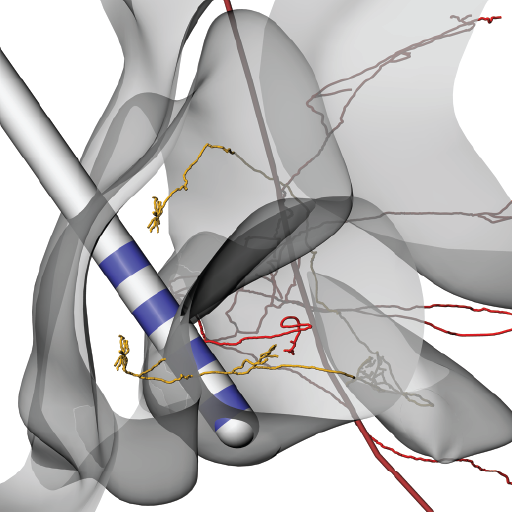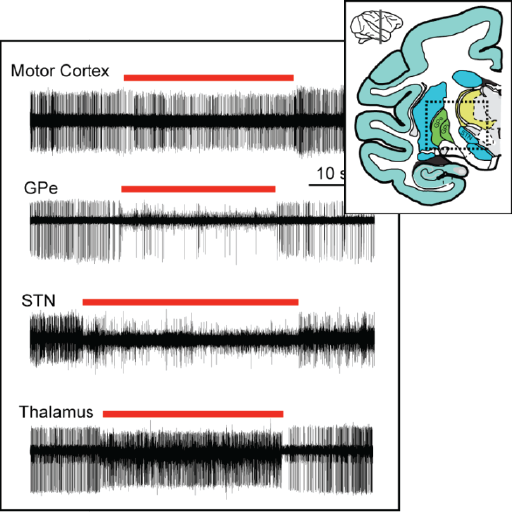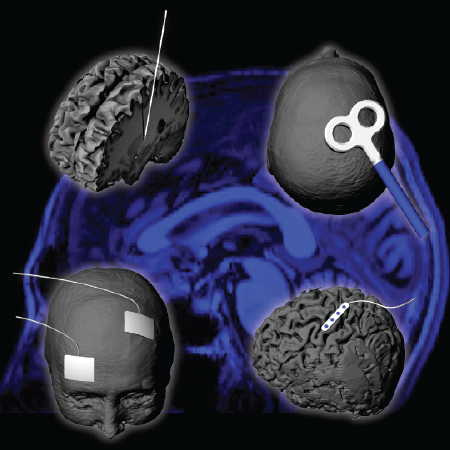Computational Modeling

Our laboratory develops multi-scale computational neuron models to further our understanding of the biophysical and physiological mechanisms of neuromodulation. In partnership with the Minnesota Supercomputing Institute, we couple finite element models of electric fields generated in neural tissue with computational neuron models built from sets of mathematical equations that replicate the biophysical properties of membrane and synapse dynamics. The neuron model simulations range in scale from multi-compartment reconstructions of single neurons with geometries identified through histological methods to large-scale neural networks. We use these computational tools both retrospectively (e.g. relating clinical outcome to targeted pathway) and prospectively (e.g. predicting how stimulation through a new electrode design might impact activity in the brain).
Neurophysiology and Behavior

Our lab also investigates the therapeutic mechanisms of neuromodulation experimentally through multi-channel electrophysiological and neurochemical techniques in animal models of movement disorders. We are particularly interested in how neurons encoding movement are modulated during deep brain stimulation, how stimulation at different therapeutic efficacies influences these neurons, and how the modulation of neuronal firing patterns changes during chronic stimulation.
Device Development

The design space for neuromodulation technology remains unbounded because we still lack a clear understanding of which neural elements to target for improving each neurological symptom. Deep brain stimulation in humans and animal models of movement disorders, for example, has shown that one can stimulate in any one of several different brain regions and relieve motor symptoms; however, if the electrode(s) are not placed correctly within a given nuclei or fiber pathway, little improvement in motor symptoms will result with stimulation. In such cases, the clinical benefit is often masked by the appearance of unwanted side-effects. We are developing new types of implants and stimulation strategies that are inspired by the underlying neuroscience. Our group evaluates these technologies in our animal models of movement disorders with the goal of leveraging our industrial partnerships to translate these therapies from the laboratory to the clinic.